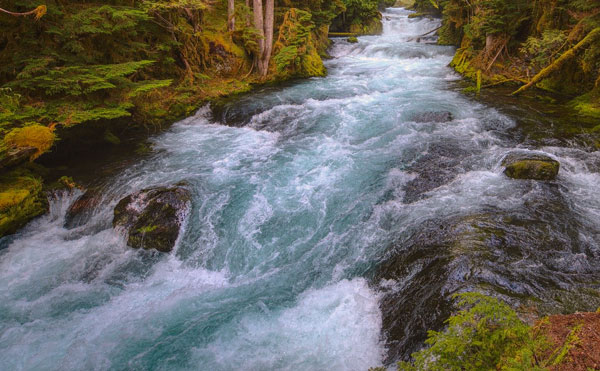
川の水質階級
- 作成日
- 編集日2024-07-04
住んでいる生き物や透明度から見る川の水質階級や一級河川・二級河川についても解説。

初めに
このページの情報を頼りに川の水を飲むのであれば、役所や管理団体に1本電話する方が確実です。
川の水って色んな環境に左右されたり、使用目的によって見方が違ったりして判断が難しいので川の水を飲む時は自己責任で。
あと極力携帯浄水器を使用したり煮沸して飲むこと。
水質階級
水質階級とは住んでる生物から判断した川のキレイさの指標。なのでpH値などの数値は一切関係ありません。
透明度などの情報は「だいたいそう」だから記載していますが水質階級には直接関係しません。
指標生物のリンクはGoogle検索に飛ばしているので画像検索で写真を御覧ください。不快に感じる虫系の生物が多いので苦手な人は気をつけてください。
水質階級I [きれいな水]
暑い日に入りたくなるような透き通った川。周りに植物も多い。
透明度:透明で川底まで見える。
水質階級II [ややきれいな水]
田んぼの近くにあることが多い。川底は歩いても不快ではない。
透明度:やや濁っている
水質階級III [きたない水]
排水路や人家がつながっていることがある。川底が泥っぽくゴミも多い。
透明度:濁っている
水質階級IV [とてもきたない水]
工場や町中にあることが多く、川岸の壁がコンクリートや鉄で作られている。川底が泥っぽくゴミも多い。
透明度:灰色っぽく濁っている
注意点
ここで紹介した生物の棲み分けですが、水質階級Iの生物がそれ以下の川に住めないわけではありません。なんなら同じ種族がいるから大丈夫だろうってだけで汚い川に生む奴らすらいます。
それと水質階級IVの生物もキレイな川に住めます。汚い川だから住んでいるのではなく天敵がいないなどの適応する環境がたまたま汚い川だったってだけなので。
ちなみ両壁と底がコンクリートで舗装されている川は、水量が増えれば川全体で増え、減れば全体で減り、流速も全体で同じスピードなので、深いところに逃げる等が出来ないので生き物が住むのには向いていないのです。
国土交通省の調査基準
上記の水質階級の分け方の他に国土交通省が川の調査をする時に見ている項目は以下の4つ。
- 生活環境(科学的)
- 人の健康(飲めるかどうか)
- 生物調査
- 新しい水質指標(不快かどうか)
生活環境は僕もよくわかりません(おい)。生物化学的酸素要求量とか化学的酸素要求量とからしい。よくわかりません。
人の健康は読んで字のごとく飲める水かどうか。
生物調査は上で説明したやつね。
新しい水質指標ってのは人の感覚で不快になるかどうか的な判断。調査結果では飲める数値だけど…飲みたくない水っていうような感じ。
ただこの環境基準って結構アバウトであんまり信用できないんです。
例で言うと大阪の道頓堀にはあのO-157で有名な大腸菌が通常の18倍もいるけど大腸菌の数は環境基準に含まれてないので問題なし。こんな感じ。
一級河川とは?
一級河川とか二級河川とか多分誰でも聞いたことあると思います。
一級って言われるとランクが高くて大きく長くキレイな川に聞こえるけど、キレイかどうかは関係ないんです。
簡単に言えば一級河川は国(国土交通省)が管理してる川で、二級河川は都道府県が管理する川のこと。それ以外は単独水系と言われて市区町村が管理してる。
分け方としては生活や経済への影響力で区分されていて大きさやキレイさは関係ない。

